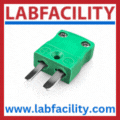
Posted to News on 9th Jun 2025, 09:40
A simple guide to checkweighing in food production lines
If you think weighing is just about measuring weight, think again. Frank Borrmann, market manager for the strategic business unit checkweighing and vision, Mettler-Toledo Garvens explores the important role this technology plays in food manufacturing, helping businesses meet weighing regulations, uphold product quality and boost productivity - all while keeping production lines running smoothly.

Checkweighing, or dynamic weighing, involves weighing items as they move along a production line. These systems typically consist of an infeed conveyor, a weighing section and an outfeed conveyor with sorting or rejecting devices. As products pass through the system, their weight is measured and categorised according to preset weight zones.
Dynamic weighing differs from static weighing for a few reasons, mainly:
Moving versus stationary weighing: Static scales measure products that are stationary, while checkweighers weigh products as they move along the line, making the process fully automated.
100% checks versus sampling: Static weighing typically involves manual spot-checks on samples, while dynamic weighing automatically checks the weight of every product on the line, offering greater consistency.
Tolerance and quality control: Checkweighers work within strict tolerance levels. Products outside these limits are automatically removed from the line to maintain quality standards.
Both static and dynamic weighing are useful in production. Static scales help set weight targets or perform sample tests, while dynamic weighing systems provide fast, automated weight control for every product.
Why install a checkweigher?
Checkweighing prevents costly mistakes that can result in fines, recalls and brand damage by weighing every single product, catching weight issues and removing non-conforming products from the production line. Manual methods, which only check a small sample, leave most products uninspected. For example, weighing 15 out of 6,000 packages covers just 0.25%, whereas checkweighers inspect 100% of products - and in real-time without disruption to the production line.
This technology also helps manufacturers comply with international weighing regulations. In the US, for instance, the average weight must match the label, and no package can exceed legal limits. Other countries enforce similar rules, and failure to meet them can lead to legal penalties. Similarly, in Europe, the EU's average weight legislation - commonly known as the "e-mark" system - mandates that product weights must meet the declared amount, with no package being significantly underfilled. Non-compliance can result in penalties, and products may be removed from the market.
Also in Europe, the Measuring Instruments Directive (MID) aims to ensure that measuring instruments are fit for purpose and legally controlled, to protect consumers and the market. All of these regulations can have a significant impact on precision weighing purchasing decisions.
In regions like Latin America, where rules may vary and manual methods are common, automation through checkweighers reduces errors and improves compliance, especially for manufacturers exporting to countries with stricter standards.
Checkweighing also helps protect brand reputation by offering consistent product quality. Underfilled products can lead to unhappy customers, lost sales and costly recalls. This technology builds consumer trust and supports brand loyalty. As global markets demand clearer, accurate labelling, precision weighing systems help manufacturers to remain competitive.
How do checkweighing systems work?
Checkweighing systems use advanced technology to provide accurate weight measurements. At their core, these systems feature load cells, which are sensors that convert the force of weight into an electrical signal. When an object is placed on the scale, the load cell measures the weight and sends the data to a digital display.
These dynamic weighing systems often work alongside other machines, such as filling or packaging equipment, to simplify the weighing process. By integrating precision weighing systems into production lines, manufacturers can monitor product weights in real-time as items move through different production stages. For instance, if a product is overweight, the system can alert operators or automatically adjust the filling machine to fix the issue. This reduces the risk of product giveaway, which is important for companies looking to cut costs.
Many checkweighers come with data management software that stores and analyses weight data. This software can track weights over time, providing insights into production efficiency and product quality. Digitalising weighing processes allows manufacturers to create detailed reports, which help with compliance audits and quality checks. Additionally, this data can help reveal trends, such as weight variations, enabling manufacturers to improve their processes.
But checkweighers can do more than just weigh. Modern checkweighers can also combine with other tools to improve quality control and safety:
Checkweigher + Metal Detector: This setup checks product weight and inspects products for ferrous, non-ferrous, and stainless steel metal contaminants, helping to enhance product quality by removing non-conforming products from the line.
Checkweigher + x-ray: With x-ray inspection added, the system can spot a wide range of contaminants, like glass or stones that may be hidden inside packages and perform further quality assurance checks at a single inspection point.
Checkweigher + vision inspection: Vision systems allow checkweighers to catch visual issues, like open flaps or missing labels, so that each package looks right. With label inspection, the system also verifies that the correct label is applied to the correct product, reducing the risk of confusion, operational errors and costly mistakes - particularly when incorrect ingredient or allergen information is involved.
These combination systems provide extra layers of quality and safety, all managed through a single interface for easier use and faster production. Together they can check for correct label application, open flaps on cartons or cases, missing caps, barcode labels and tamper-evident seals, package orientation and skew detection, presence of batch numbers, expiry dates, or "best before" dates, and contaminants like metal, stone, or glass.
What food products can checkweighers handle?
Dynamic weighing systems are highly adaptable, capable of accurately measuring both unpackaged and packaged foods. They handle different products, including liquids such as sauces and beverages, solids like meats and cheeses and dry ingredients such as grains and powders. Additionally, these systems accommodate various packaging types, including bottles, jars, cartons, pouches and bulk containers. This flexibility allows manufacturers to use a single checkweigher across multiple product lines, offering consistent weight control while maximising operational efficiency.
Where should checkweighers be installed?
Dynamic weighers are typically placed at Critical Control Points (CCPs) in production, before and after packaging, and just before goods leave the facility. By positioning them strategically, manufacturers can catch weight discrepancies early and prevent issues down the line such as waste, compliance violations, and packaging errors.
What are intelligent checkweighers?
Today's Intelligent Checkweighers are part of a broader shift towards Intelligent Weighing Automation - where real-time data, connectivity and machine learning are used to drive automatic adjustments across the production line. These systems go beyond simply measuring weight; they actively contribute to process optimisation.
For example, with Feedback Control, the checkweigher communicates directly with the upstream filling machine. When weight deviations are detected, the system automatically adjusts fill volumes to maintain consistency. This continuous fine-tuning reduces overfill, minimises ingredient waste, improves yield and ultimately helps manufacturers maximise profits. By increasing accuracy, reducing rework and enabling predictive maintenance, intelligent checkweighers support more sustainable, cost-effective and profitable production.
Why are checkweighers important?
Dynamic weighing crucially aids in compliance, helping manufacturers to adhere to local and global regulations. Beyond this, the technology helps to save products from ending up in the bin, reduces waste and minimises downtime, all while maintaining product quality. With rising production costs, this accuracy becomes even more valuable, helping manufacturers boost productivity as well as profits, without compromising standards. Switching from static weighing spot checks to a dynamic weighing solution can also enable resource shifts, allowing operators to focus on higher value adding tasks.
Where manufacturers must meet both local and international demands, checkweighers provide a competitive edge. They streamline operations and improve product quality, helping companies adapt to changing markets and customer expectations.
Checkweighers go beyond measuring weight: they also help businesses comply with regulations, improve product quality, and operate more efficiently.





